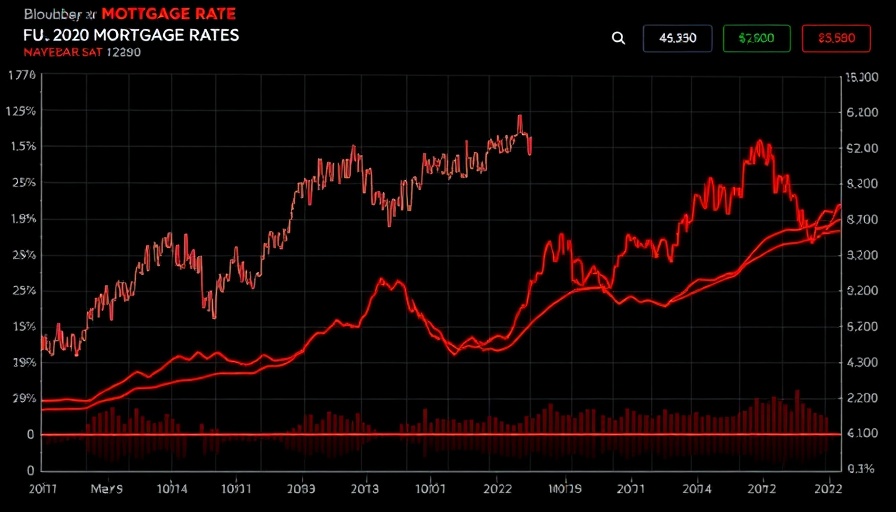
Mortgage Rates Take a Dip: What You Need to Know
In an unexpected turn of events today, mortgage rates have experienced a slight decline, making home financing a little more accessible for potential buyers. This change comes against a backdrop of fluctuating market conditions and evolving economic indicators. But what do these movements mean for your wallet?
A Sneak Peek into Today's Market Movements
The bond market showcased some volatility today, which typically spells changes in interest rates. Higher volatility usually translates to higher mortgage rates. However, recent developments in the economic landscape led to a rather stable outcome. Following news of a judicial ruling delaying the implementation of certain tariffs, the stock market rallied, and there was initial expectation of a rise in bond rates. Yet, as the day progressed and economic data began to trickle in, it was evident that the bond markets had other plans.
Understanding Today's Economic Indicators
Today’s modest drop in the average conventional 30-year fixed mortgage rate—a decrease to 6.97%—is part and parcel of how markets react to economic news. The softer economic data made investors favor bonds, consequently driving rates lower. This illustrates a key principle in finance: often, bad news can be good news for mortgage seekers!
Why Should You Care About Mortgage Rates?
As borrowers hunt for better deals, understanding mortgage rates can be crucial for making informed decisions. The current average rate might seem modest at first, but even a slight dip can save homeowners — or potential buyers — thousands over the life of the loan. It can be the difference between feeling financially secure in your home and struggling to meet monthly payments.
Future Trends: What Lies Ahead for Borrowers?
Looking forward, potential borrowers should stay attuned to the fluctuations in mortgage rates as they continue to react to economic factors. Experts suggest that if economic conditions remain weak, we can expect rates to stabilize or even dip further, benefiting those looking to secure favorable loan terms. However, as is typical in finance, conditions can shift rapidly, so keeping an eye on market indicators helps inform timely decision-making.
How Can You Prepare for a Mortgage Application?
The best way to navigate the mortgage landscape is to do your homework before diving into the application process. Here are a few tips: 1. **Review Your Credit Score**: A higher credit score can unlock better loan terms. 2. **Know Your Budget**: Understand what you can comfortably afford. 3. **Research Lenders**: Explore different lenders' rates and terms; don’t accept the first offer. 4. **Stay Informed**: Knowledge is power! Keep abreast of mortgage rate trends and economic news.
Take Action Now
With rates slightly lower, now could be an opportune time to act if you’re considering purchasing a home or refinancing. The modest rate drop makes financing slightly more favorable—every basis point counts in the long run! Follow daily updates on mortgage rates and watch for potential lending opportunities that could benefit you.
For more personalized insights, reach out to a mortgage professional who can guide you through the complexities of securing the best rates available. Your financial future may depend on the decisions you make today!
 Add Row
Add Row  Add
Add 




Write A Comment